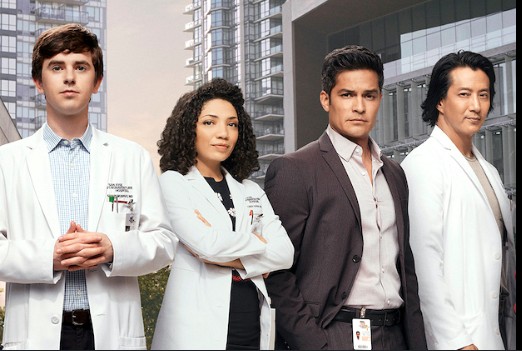
When ABC premiered “The Good Doctor” in 2017, the medical drama faced a landscape already saturated with hospital-based series. What distinguished this new entry in the genre was not just its focus on a surgeon with autism and savant syndrome, but the extraordinary performance at its center. Freddie Highmore, fresh from his psychologically demanding role as Norman Bates in “Bates Motel,” accepted perhaps an even greater challenge: portraying neurodiversity with accuracy, sensitivity, and depth. His performance as Dr. Shaun Murphy has not only captivated audiences but has contributed meaningfully to broader conversations about representation of autism in popular media.
Equally remarkable is Highmore’s vocal work. Shaun’s speech patterns—the modulated tone, precise diction, and distinctive rhythm—communicate not just his neurodivergence but his personality: his intellectual confidence, his moral clarity, his occasional frustration when others fail to understand his perspective. Through these carefully considered choices, Highmore creates a character who is never defined solely by his autism but is shaped by it as one aspect of his complete humanity.
“The Good Doctor” places Shaun in the high-pressure environment of a prestigious hospital where he must constantly prove his capabilities while navigating social dynamics that don’t come naturally to him. The dramatic tension of the series often emerges from this intersection of exceptional medical ability and social challenges. Highmore navigates these dual aspects of the character with remarkable precision, showing how Shaun’s different way of processing information can be both a professional advantage (his ability to visualize anatomical structures and recall medical literature with perfect clarity) and a social complication (his difficulty reading emotional cues or understanding unspoken workplace norms).
What elevates Highmore’s performance beyond mere technical accomplishment is the emotional depth he brings to Shaun’s journey. Through subtle shifts in expression and body language, he conveys Shaun’s intense feelings—his frustration when misunderstood, his satisfaction in solving medical puzzles, his grief when facing loss, his tentative joy in forming connections with colleagues and patients. These emotions, though sometimes expressed differently than neurotypical characters might express them, are rendered with such authenticity that viewers are invited into Shaun’s perspective rather than observing him from a distance.

The series creator, David Shore (previously known for “House M.D.”), has frequently praised Highmore’s collaborative approach to developing Shaun’s character: “Freddie comes to the table with thoughtful questions and insights about how Shaun would experience specific situations. He’s constantly thinking about maintaining consistency while allowing the character to grow and evolve.” This evolution has been one of the most compelling aspects of Highmore’s performance over multiple seasons, as he portrays Shaun’s gradual development of coping strategies, deeper relationships, and greater self-advocacy.
Perhaps most significantly, Highmore’s portrayal avoids both sentimentalizing Shaun’s differences and suggesting that his value lies in overcoming them. Instead, his performance highlights how Shaun’s unique perspective enhances his medical practice and enriches the lives of those around him. When Shaun achieves breakthroughs—professional successes, moments of connection, personal growth—Highmore portrays these as natural developments in a complex life journey rather than inspirational triumphs over adversity.
Highmore’s performance has also educated neurotypical viewers about the varied presentations of autism, challenging simplistic stereotypes and highlighting the importance of accommodation rather than enforced conformity. Through Shaun’s experiences, audiences witness how environmental factors—excessive noise, unexpected changes, social pressure—can create barriers for neurodivergent individuals, while supportive colleagues, clear communication, and respectful accommodation can enable full participation and contribution.
The actor’s commitment to responsible representation extends beyond his performance to his advocacy off-screen. Highmore has used interviews and public appearances to emphasize that Shaun represents one individual experience of autism, not a universal one, and to highlight the importance of increased opportunities for neurodivergent actors. He has consistently redirected praise for his portrayal toward the importance of greater disability representation both in front of and behind the camera.
This consciousness of his responsibility as a neurotypical actor portraying autism reflects Highmore’s characteristic thoughtfulness about his craft. Throughout his career, from child roles in “Finding Neverland” and “Charlie and the Chocolate Factory” through his adult work in “Bates Motel” and now “The Good Doctor,” Highmore has approached each character with intellectual curiosity and emotional commitment. His portrayal of Shaun Murphy represents the culmination of these qualities: a performance that combines technical precision with profound humanity.
As “The Good Doctor” continues its successful run, Highmore’s nuanced portrayal of Dr. Shaun Murphy stands as a landmark in the representation of neurodiversity on television. By creating a character who is defined not by what makes him different but by his complete humanity—his intelligence, his compassion, his struggles, his growth—Highmore has contributed to a more inclusive and authentic vision of human experience on screen. In doing so, he has demonstrated that the most compelling performances emerge not from imitation but from deep understanding—not from playing difference but from recognizing our shared humanity across those differences.
